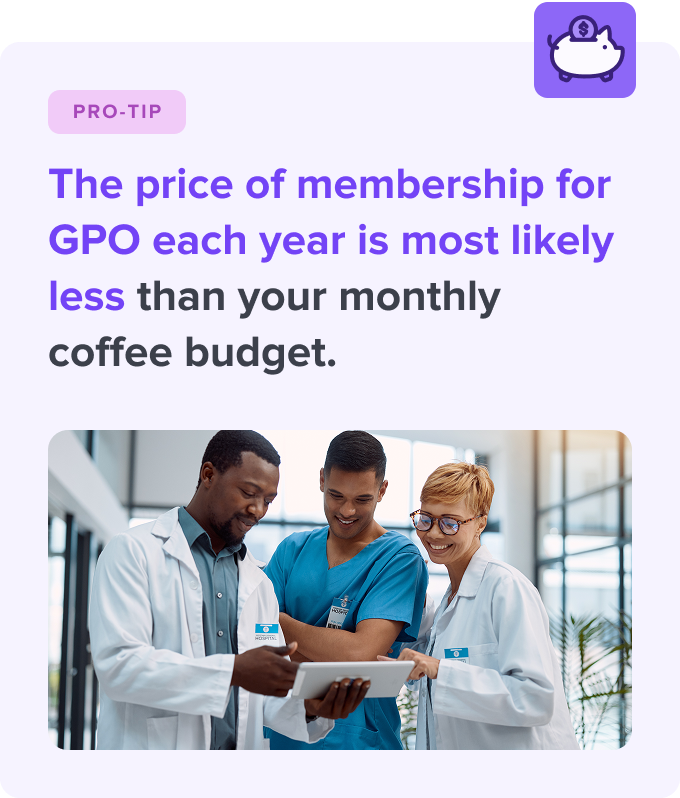If you're like most dental practice owners, you're probably spending between $30,000 and $50,000 annually on supplies per location. That's a significant chunk of your overhead—money that could be going toward new equipment, staff bonuses, or your bottom line.
What you may not realize is while you're comparing prices between two or three suppliers, large DSOs are leveraging their size to negotiate 20-30% discounts on those same products.
But what if you could access similar savings without selling your practice?
This is the driver behind why independent practices join Group Purchasing Organizations (GPOs).

Think of a GPO as your practice's professional negotiating team.
For around $150-300 per month, you gain access to the collective buying power of hundreds or even thousands of practices. Instead of negotiating alone, you're part of a group that can demand better prices, terms, and service from suppliers.
But what you should know: not all GPOs are created equal.
The difference between a GPO that delivers real savings and one that just makes promises comes down to three critical components.

Your GPO needs relationships with reliable distributors who can deliver products on time, every time. The biggest discount in the world means nothing if ordering becomes a hassle or deliveries are inconsistent. You need partners who integrate with your ordering systems and maintain consistent inventory levels.
A good GPO doesn't promise savings. They prove it. When considering multiple GPOs, you should ask for data showing how much their members actually purchase to negotiate effectively with manufacturers. Empty promises of "3,000 potential customers" don't move the needle with manufacturers. Hard purchase data does.

This is where most GPOs fall short, and it's why many dentists give up on them. Without technology to guide your purchasing decisions and track compliance, you're essentially trying to remember which products have the best negotiated prices while juggling multiple supplier websites and catalogs.

To illustrate this point, let’s walk through an example scenario.
Your GPO negotiated a fantastic deal on prophy paste that’s 30% below your current price.
But when your office manager goes to order supplies, she defaults to the familiar brand from your usual supplier because she doesn't know about the savings opportunity.
Multiply this by dozens of products and hundreds of practices, and you see the problem.
Moreover, manufacturers will quickly realize the GPO can't actually shift purchasing behavior, and those negotiated discounts disappear.

A technology-enabled GPO solves this by:
When technology, distribution, and negotiation work together, something powerful happens:
This creates what industry insiders call "defensive positioning"—manufacturers offer their best prices not hoping to gain business, but because they're afraid to lose it.

Many practice owners feel caught between a rock and a hard place.
Stay independent and struggle with rising costs, or join a DSO and lose control of your practice.
GPOs offer a third option:
GPO advantages:
The investment:
The return:

The price of membership for GPO each year is most likely less than your monthly coffee budget.
What that allows, however, is accessing the same purchasing power as practices 100 times your size.
This could add up to thousands of dollars from supply costs to growth initiatives and allow you to compete with DSOs on cost while maintaining your autonomy.
Looking to explore GPO options? Browse Method's vetted GPO partners in our Partnership directory and start saving today.









